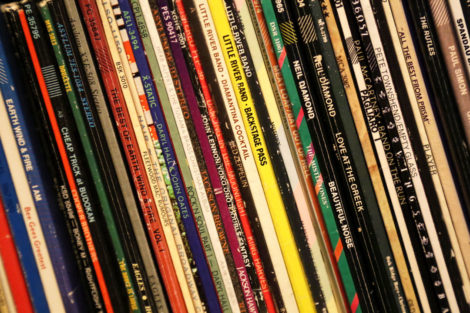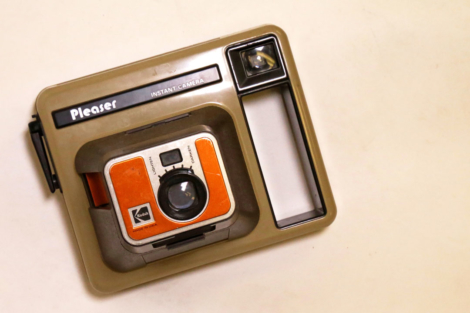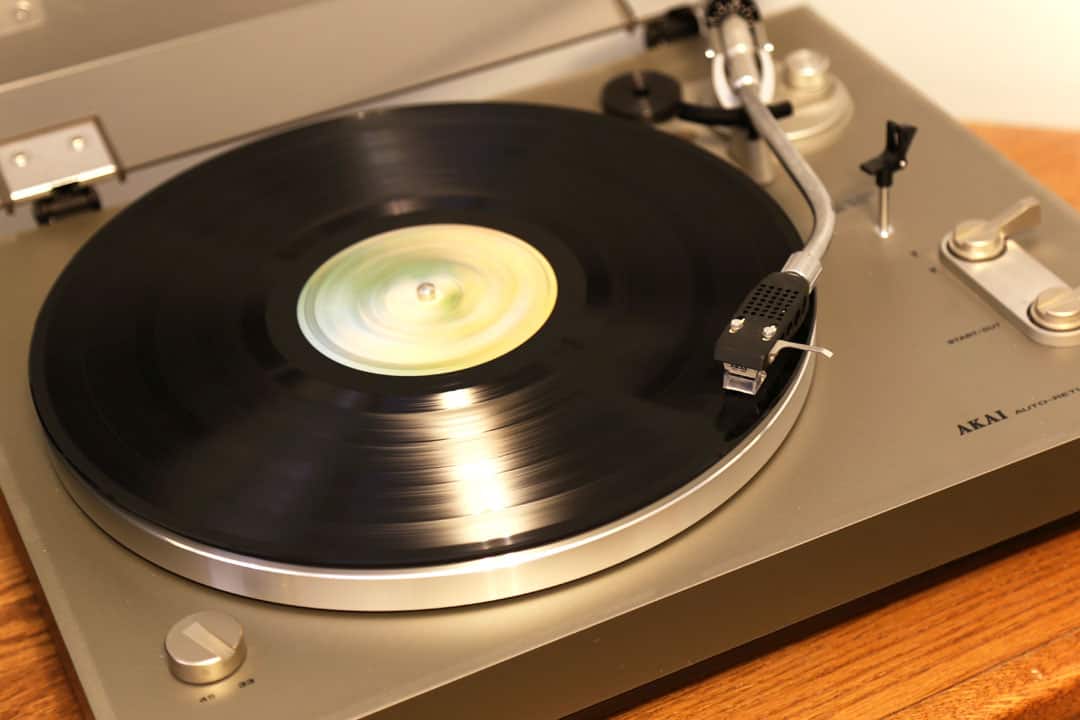On my fifteenth birthday, I was gifted a record player and a vinyl of Arctic Monkeys’ fourth album Suck it and See. At the time, I was participating in a trend that was decades in the making. Record players and vinyls were all the rage, and they continue to be so to this day. But after collecting the rest of the Arctic Monkeys’ discography, as well as some of Sufjan Stevens’ and Father John Misty’s, I had to retire my record player, effectively leaving my small yet expensive record collection as nothing more than mere album art.
The fact of the matter was that the music sounded worse coming from my cheap orange vinyl player: songs skipped, background instrumentals were out of tune, and melodies were distorted. I couldn’t help but be confused by the vinyl craze. I wondered why people were looking to progress in most facets of their lives, but regress in their music.
And I was not the only one bewildered. The vinyl trend has inspired many a thinkpiece, documentary, and heated discussion. It has perplexed those that see music as a sum total of instruments, rhythm, and vocals, but has placated those that take into account experience and historical context.
We are not a society of Luddites. We don’t shed earnest tears over the first edition of the iPod or the initial version of Windows. We want our technologies to develop faster, harder, and more often.
So why is it that a person who has the newest Apple products probably also has an extensive record collection? Is it some kind of blinded dissonance or is there something more behind the trend?

SHANNA HUNTER/THE VARSITY
Liam Baldwin, a graphic design student at York University and owner of a record collection numbering in the 100s and passed down through the generations, explains in an email why he loves listening to vinyls: “You get a really pure and visceral listening experience, with a good quality turntable, speakers and 180 gram vinyl, you can catch every little detail in the recording.”
And it’s these little details that make records so appealing: the ability to catch any flaw or imperfection makes for an authentic listening experience, one free of the sterility of modern, mass-produced, digital music. One can only imagine that this all stems from classic rock vinyls.
You don’t need need to dig deep to find statistics that corroborate this record resurgence. In Nielson Music Canada’s 2017 report, record sales saw a 21.8 per cent increase, which also marked the seventh straight year of growth.
Blair Whatmore, assistant manager at Sonic Boom, Canada’s largest independent record store, observes that “the last five years have been really great for the sale of vinyl records; they’ve come back in a huge way.”
When asked about the types of records that are most popular, Whatmore confirms the relationship between medium, age, and genre: “People are always after classic titles — records that originally came out on vinyl and were intended to be heard on vinyl.” She explains, “People are always interested in getting copies of those because that’s the way the artform was designed to be heard. We do well with classic releases from the 60s and 70s and 80s.”
This pattern stands out on the charts as well. Of the top ten bestselling records in 2017 in Canada, only Kendrick Lamar’s DAMN. was of the hip hop genre. All the rest were either pop or rock. This illustrates the intrinsic and nearly subconscious association between genre and medium.
Rock and pop dominate the vinyl charts partly because of the aesthetic that surrounds records — you know the kind: a Joy Division vinyl spinning somberly on a player, framed à la Wes Anderson — and partly because rock albums were initially intended for the vinyl medium.
Conversely, hip hop, rap, and R&B dominate the streaming charts. According to Forbes, of the top five most streamed albums in the US in 2017, only Ed Sheeran’s Divide didn’t fall into the hip hop or R&B genre. If you were to see a vinyl spinning, you’d expect to hear Joy Division or The Doors, not Kendrick Lamar or Drake. The former incorporate the fractured sound of vinyl records into their aesthetic. The relationship between outcome and production is therefore synergetic.
Even when modern musicians reference and sample old music, they keep the fractured sound. A recent example of this can be found in Kanye West and Kid Cudi’s collaborative song “4th Dimension” from their album Kids See Ghosts, which opens up with a sample from Louis Prime’s 1936 “What Will Santa Bring.” The sample is crinkly and warped; it offers the tell-tale aged sound that is the crucial juxtaposition to the modern, electronic melody that closely follows.
Kanye doesn’t digitally restore the track because it would lose its personality and authenticity. Imperfection is what makes it interesting.
Listening to records is no different than watching a black and white movie in its original monochrome version. We want to see age and we want to hear age. This is what motivated the original record resurgence — our desire to resurrect the sounds of generations past from an archived graveyard, our desire to hear the same sounds as those in the 50s and 60s.
Modern albums selling out on records is just the aftermath; a trend inevitably stretching its influence to the current and the popular. “I think that part of the reason they’ve become so popular again is that there’s a generation of people who have grown up and didn’t have the CD format; there was never a physical element to music at all,” Whatmore explains. “So I think that the resurgence of vinyl is partly due to that generation of people being able to curate something; curate their collection of records, a reflection of their taste and what they love.”
There is novelty in listening to an album from start to finish — a practice nullified by the very concept of playlists — and in collecting limited edition vinyls and album covers. The physicality of holding a record and putting it on a player adds more to the listening experience than clicking on an icon on your computer screen. So does having a physical collection of the albums that you feel best represent and inform you.
But to say that streaming is killing music — and that records are resurrecting it — is facetious at best. Whatmore says that streaming music may actually boost record sales: “We’re reaching a point now where people enjoy buying music, and they’re streaming music because it is a good way to sample something and learn about new things before you commit to buying them.” Baldwin echoes the same sentiment: “I’ve probably found some of my favourite artists through streaming services [from] which I then went on to buy their album on vinyl.”
The resurgence of record players isn’t happening independent of streaming and digital mediums. There’s a lot of overlap and concurrence; they feed off of and help progress one another. Despite the resurgence, however, records still have a long way to go before they are wholly mainstream again.
The landscape for record stores is anything but conventional. Many record stores in Toronto operate in conjunction with other businesses, oftentimes with ones that have a similar niche or customer set. Vinyl Vault is open on the second floor of Sonic Bar & Café, a Chinatown bar, and Female Treble is open in Eyesore Cinema, a video store on Bloor Street.
Yearning to relate to older generations has been a recurring theme in this article; however, the practice of buying and listening to vinyls in the 60s and doing the same now, is different in intention.
Back then, vinyls were solely for utilitarian purposes: they were used to play recorded music. Now, vinyls have a more complex reason for existing. They are not only meant to play music, but they’re also meant to transport us to a time before iPods and Spotify. For better or for worse, they bring back the sound of two generations ago — imperfect, fractured, yet nevertheless, authentic.
The past is never just the past. Be it by the underground or the mainstream, old fashions and trends are absorbed and repurposed to fit into our modernity; we bring back clothes, makeup, and hairstyles, and refurbish them to meet our needs. Take Polaroids as an example. The ability to hold, shake, and touch the picture is just as significant to the experience as the vintage and raw aesthetic. They’re experiencing a resurgence that stems from the same reasons as that of records: people like the physicality and the authentic feel to them.

SHANNA HUNTER/THE VARSITY
It is easy to blame the record resurgence on hipsters, and to colour record-buying as nostalgic idiocy motivated by those who love 90s indie movies a little too much. But there’s an obvious desire hidden behind the trend: the need for imperfection and authenticity.
In a couple of years, when I can afford a better, state-of-the-art record player, I’m sure my vinyls will be put to good use once more.


